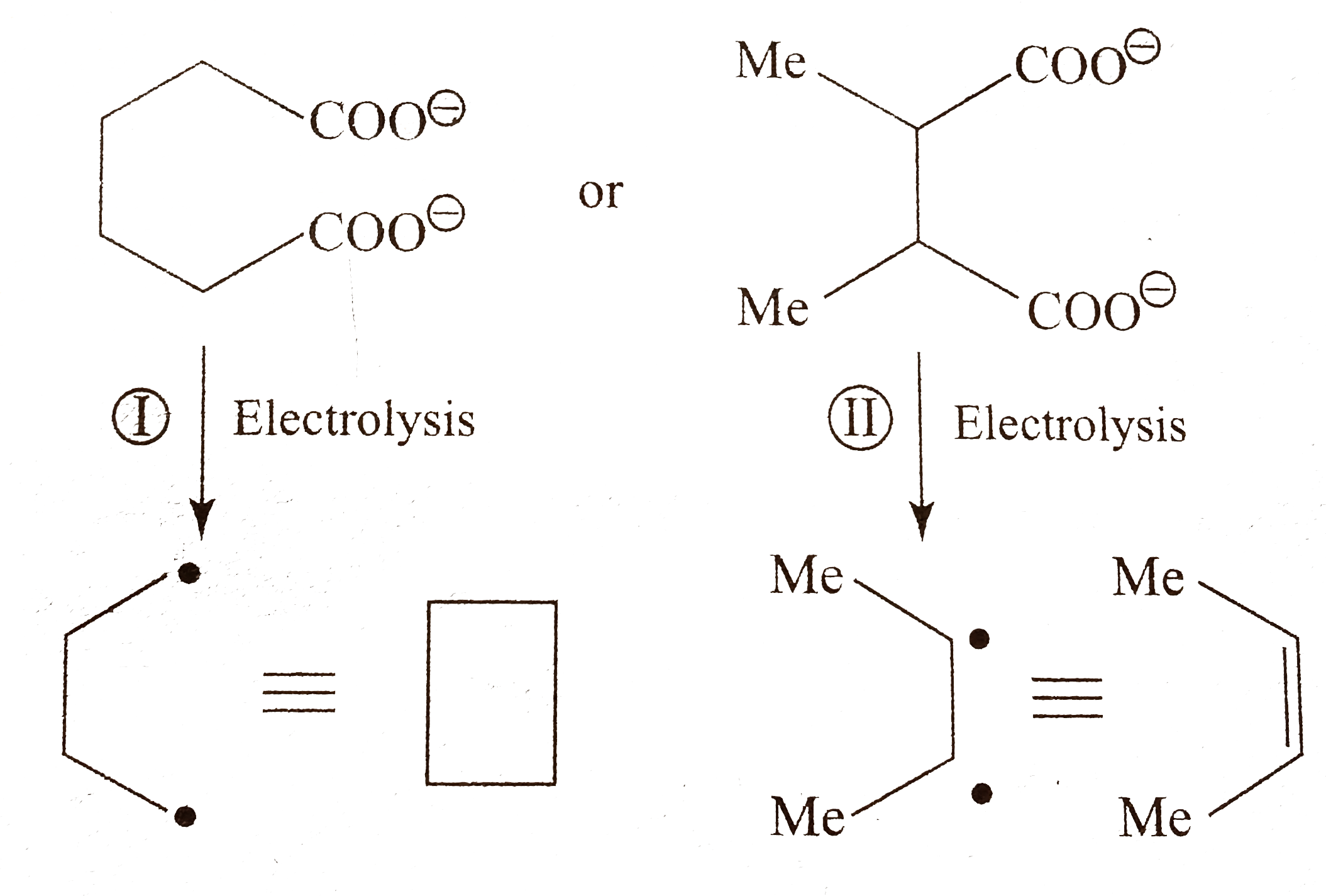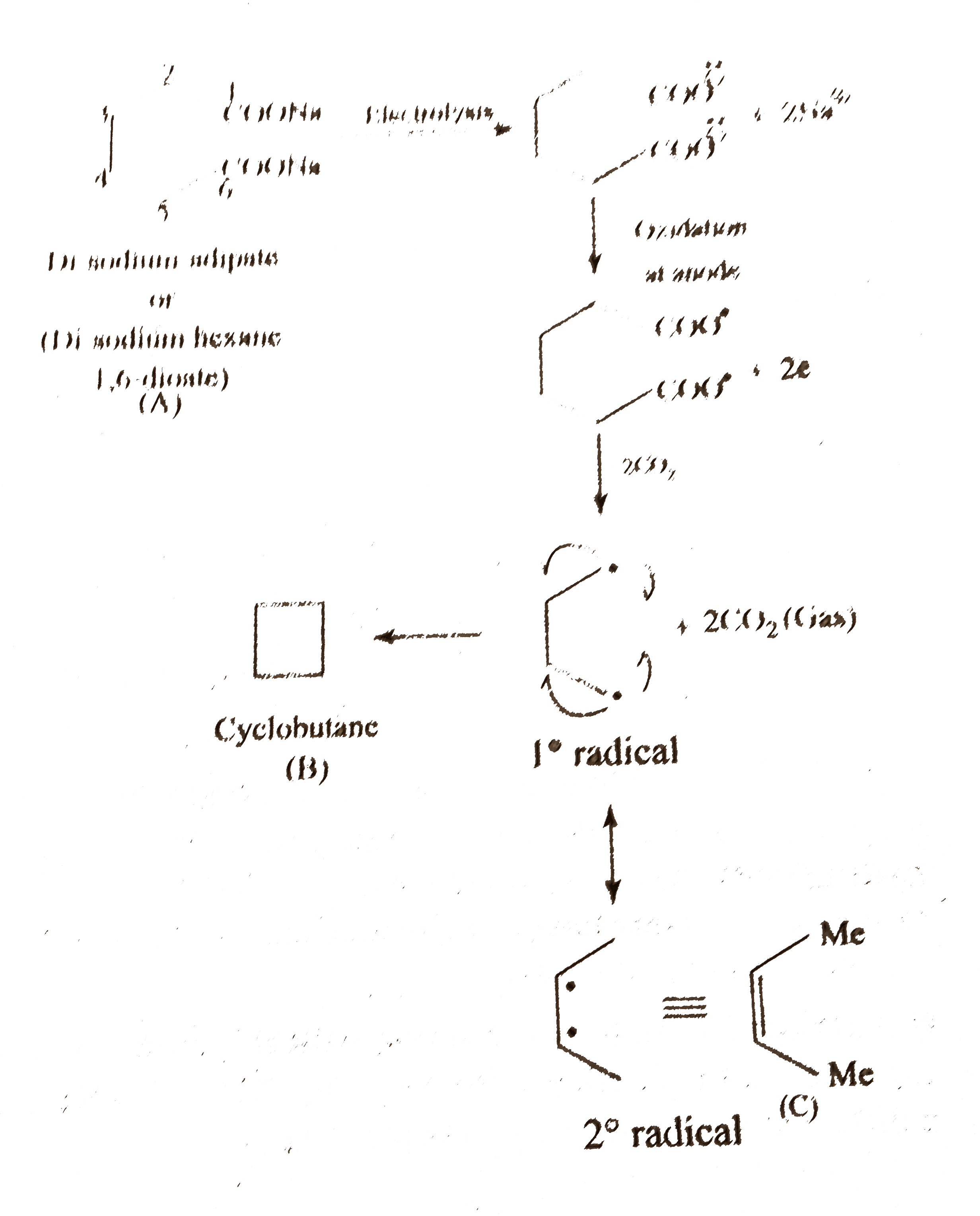A compound (A) is a sodium salt of dibasic acid and on electrolysis gives a gas (B), gas CO2 at anode, and H2(g) at cathode.
Gas (B) does not give any test for unsaturation, i.e., it does not decolourise Br2 water solution and aqueous KMnO4 solution.
Gas (B) on reaction with (H2+Pt) at room temperature does not react but at 120∘C, gas (B) gives butane. Identfy (A) and (B)
(A) should be a 6−C−atom because (B) on reduction at 120∘C gives butane [4C atoms of butane +2(−COOH) group ].
(A) can be :

(A) cannot be (II) because the product obtained by this will be alkene that gives test for unsaturation, but according to the problem, (B) does not give this test. So (A) is (I)

The product can be (C) also, due to the stabilisation of 1∘ radical to 2∘ radical, but one has to proceed according to the problem given .

Topper's Solved these Questions
- ALKENES AND ALKADIENESBook:CENGAGE CHEMISTRYChapter:ALKENES AND ALKADIENESExercise:EXERCISES
Explore 29 Videos
- ALKENES AND ALKADIENESBook:CENGAGE CHEMISTRYChapter:ALKENES AND ALKADIENESExercise:linked Comprehension Type
Explore 38 Videos
- ALKENES AND ALKADIENESBook:CENGAGE CHEMISTRYChapter:ALKENES AND ALKADIENESExercise:Single correct Answer
Explore 14 Videos
- ALKANES AND CYCLOALKANESBook:CENGAGE CHEMISTRYChapter:ALKANES AND CYCLOALKANESExercise:Archives
Explore 13 Videos
- ALKYNESBook:CENGAGE CHEMISTRYChapter:ALKYNESExercise:Exercises (Archives - Analytical and Desriptive Type)
Explore 4 Videos
Similar Questions
Knowledge Check
During electrolysis of aqueous NaOH,4gofO2 gas is liberated at NTP at anode, H2 gas liberated cathode is
A2.8 litresB5.6 litresC11.2 litresD22.4 litresA gas decolourises alkaline KMnO4 solution but does not give precipitate with silver nitrate. It is:
ACH4BC2H6CC2H4DC2H2A gas decolourises alkaline KMnO4 solution but does not give precipitate with silver nitrate. It is:
ACH4BC2H4CC2H2DC2H6
Zinc on reaction with NaOH gives a salt (A) alongwith a gas (B). (A) on reaction with H2S gas gives a white precipitate (C ). Identify (A), (B) and (C ).
View SolutionAn unsaturated compound C6H12 A) decolourless Br2. Water and on oxidation by acidified KMnO4 gives optically active carboxylic acid C4H9COOH (B). Give the structure of (A) and (B).
View SolutionEthylene is an unsaturated hydrocarbon which decolourises Br2/CCl4 and alkaline KMnO4 solutions. In contrast, benzene is highly unsaturated yet it does not give the above reactions. This is because
View SolutionA gas which reacts with aqueous KMnO4 solution but does not give precipitates with ammonical Cu2Cl2 solution is
View SolutionA gas on passing through ammonical solution of AgNO3 does not give any precipitate but decolourises alkaline KMnO4 solution. The gas may be:
View Solution


